For this instalment of our “It’s Complicated” series, we wanted to take a look at a less frequently seen, and perhaps less well-known complication: the Equation of Time. In this article, we will look at what the Equation of Time is, what causes it, what an Equation of Time complication conveys when included on a timepiece.
Equation of Time
Over the course of history, there have been a myriad of timekeeping devices, from the earliest concept of a sundial through to a modern atomic clock. Whilst the inventions and devices created by man to measure and show time have evolved, one thing that all of these devices have in common, no matter how complicated they may be, is their relationship to the passage of time, night and day, and a calendrical relationship with the celestial.
Today in watchmaking there are numerous complications dedicated to expressing this as accurately as possible: hours, minutes and seconds mark the continual passage of time, date and calendar complications mark (most commonly) the progress of the Gregorian Calendar, even so far as to account for the extra day in a leap year with the perpetual calendar complication. A moon-phase complication marks each lunar cycle – sometimes including both the Northern and Southern hemispheres of our world.
There are pieces today with other astronomical complications, too, such as Bovet’s Grand Récital 22 with its depiction of the Earth, moon and sun, and Patek Philippe’s 6102/6104 references which depict an accurate representation of the night sky, with an ellipse to highlight what is visible from their Geneva home at any time of year.
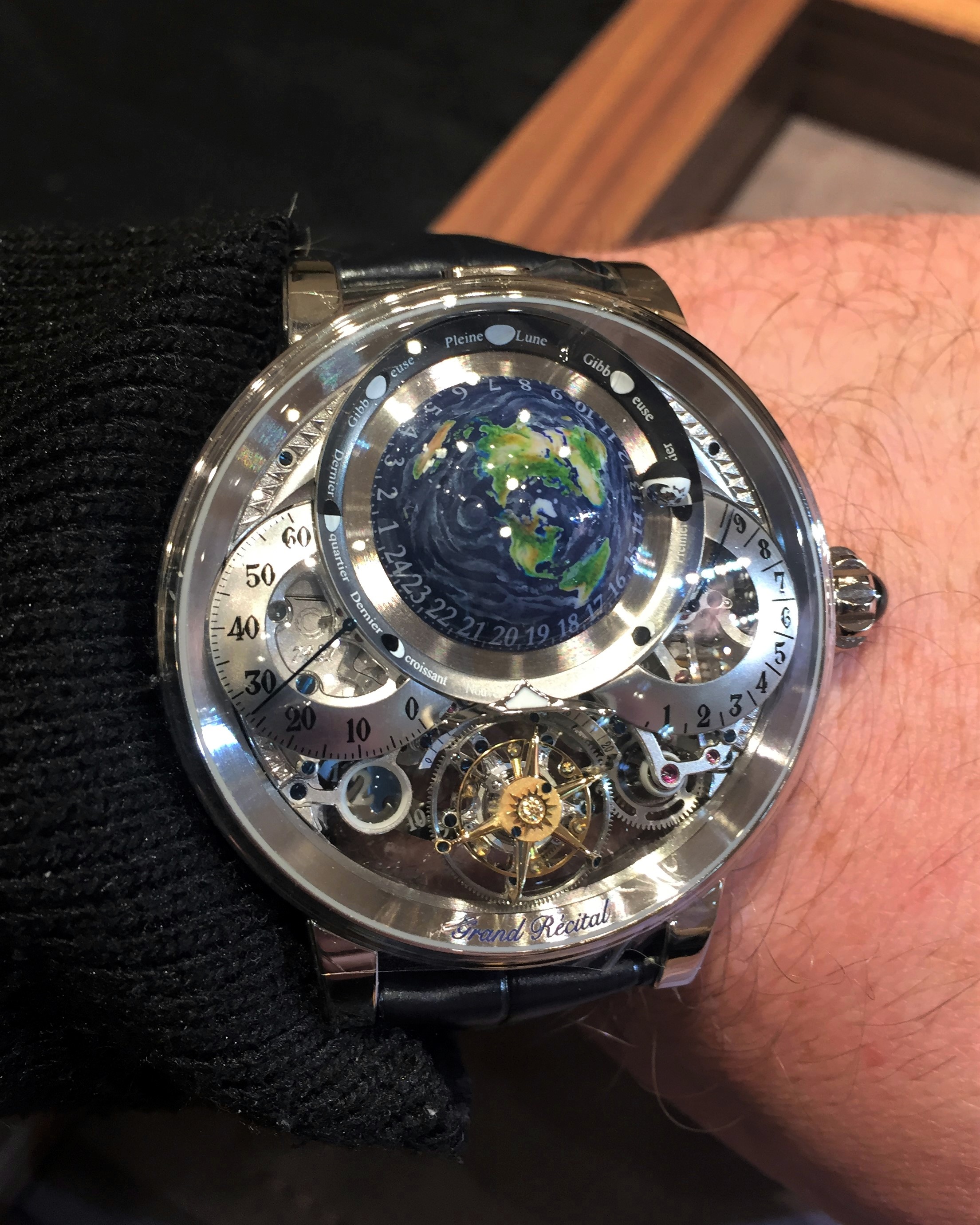
Bovet Grand Récital 22 R22N002
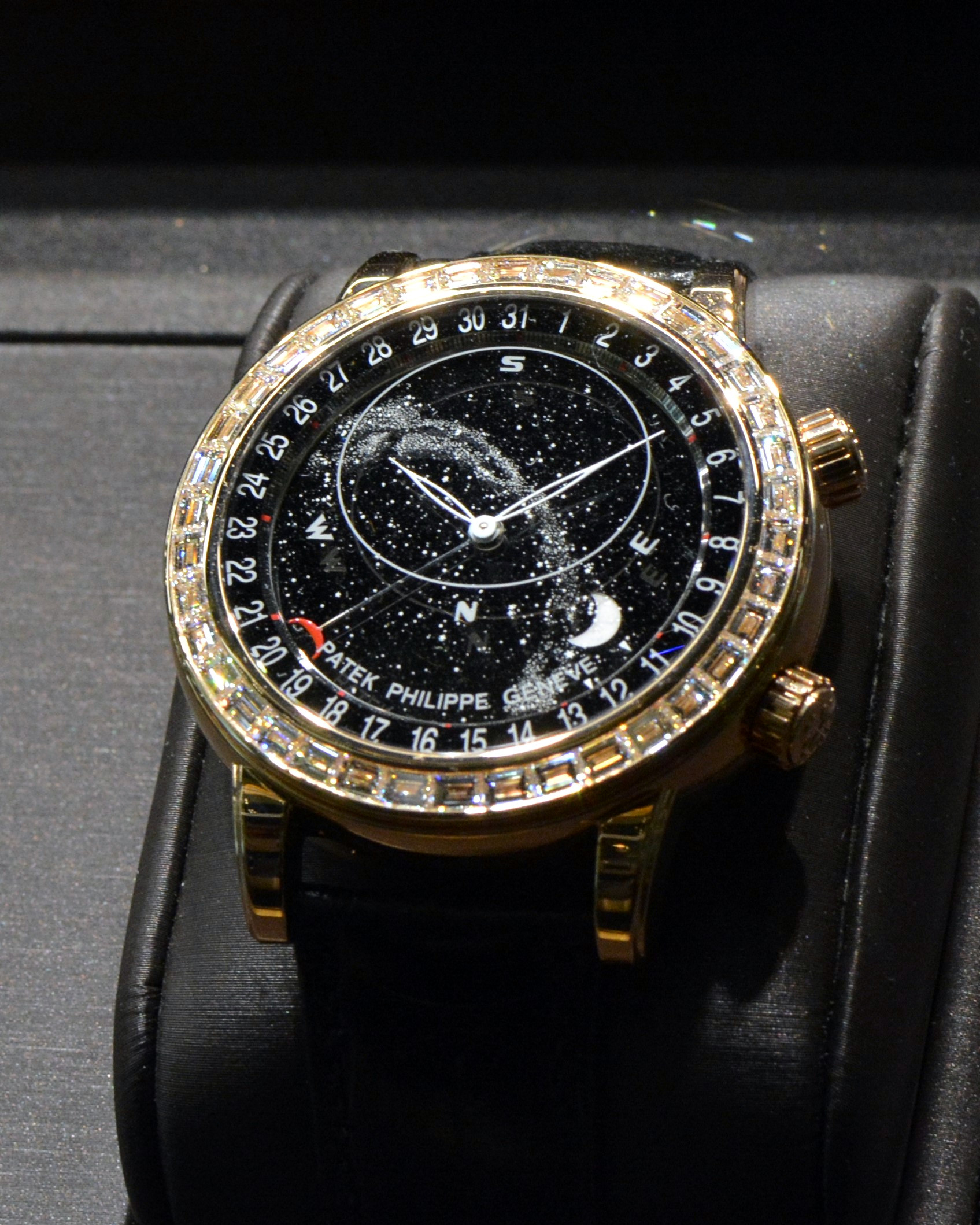
Patek Philippe Grand Complications 6104R-001 Celestial Moon Age
All very impressive, for sure. However, with this article we have chosen to focus on a lesser known complication, the Equation of Time.
What is the Equation of Time?
Bear with me for a few minutes here as the start point for this may seem a little unusual for a watch complication! So… we are all familiar with the four seasons our Earth experiences each year – Spring, Summer, Autumn/Fall, and Winter. We are also all familiar with experiencing longer days in the summertime and shorter days during winter.
Astronomically speaking, this is caused by the Earth tilting upon its axis whilst completing an elliptical orbit of the Sun.
Each and every day varies in length, getting longer or shorter as we transition through the seasons; the sun is therefore never at its highest point in the sky at the same time (according to our clocks) for two consecutive days. This can be demonstrated through a simple experiment, by keeping a camera in the same place and orientation over the course of a year and taking a photo to record the position of the sun at midday each day. Over the course of the year you might (reasonably) expect the sun’s highest point to move up and down in a straight line as the Earth tilts, however you will actually find that this creates a figure of 8 pattern, known as an analemma. An example of an analemma is shown below:
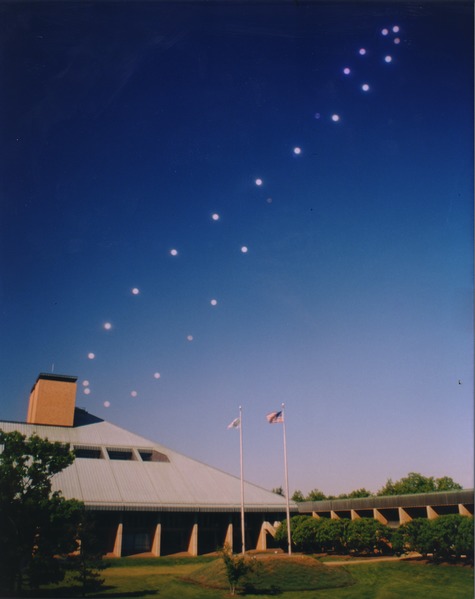
Afternoon analemma photo taken in 1998–99 in Murray Hill, New Jersey, USA, by Jack Fishburn, photo: Wikipedia
It is interesting to note that if you repeated this same experiment, instead taking the photo when the sun is at its highest point in the sky (irrespective of the time on the clock), then you would find the sun’s highest point to move up and down in a straight line as the Earth tilts. This straight line would be 47° from the highest to lowest points, corresponding with the Tropics of Capricorn and Cancer, each being 23.5° north or south of the Equator.
Whilst the north-south variation of an analemma is caused by the tilting of the Earth on its axis, it is by using our man-made construct of time that we introduce a this unexpected east-west variation, creating the figure of 8 shape; this happens because the sun does not always reach its highest point in the sky at midday.
As mentioned earlier, the Earth completes an elliptical orbit around the Sun – meaning that at certain points in its orbit the Earth is closer to the sun, and further away from it at others. This causes are marginal change the speed of the Earth as it follows the path of its orbit, moving faster when it is closer to the sun in November time, and moving more slowly when it is further away from the sun around July.
When the Earth is moving faster in its orbit, the “solar midday” (when the Sun is at its highest point in the sky) occurs after the “mean time” (what a clock would determine as midday), giving the effect of a clock or watch being slightly faster.
When the Earth is moving more slowly in its orbit, “solar midday” occurs before the “mean time” midday, giving the effect of a clock or watch is slightly slower.
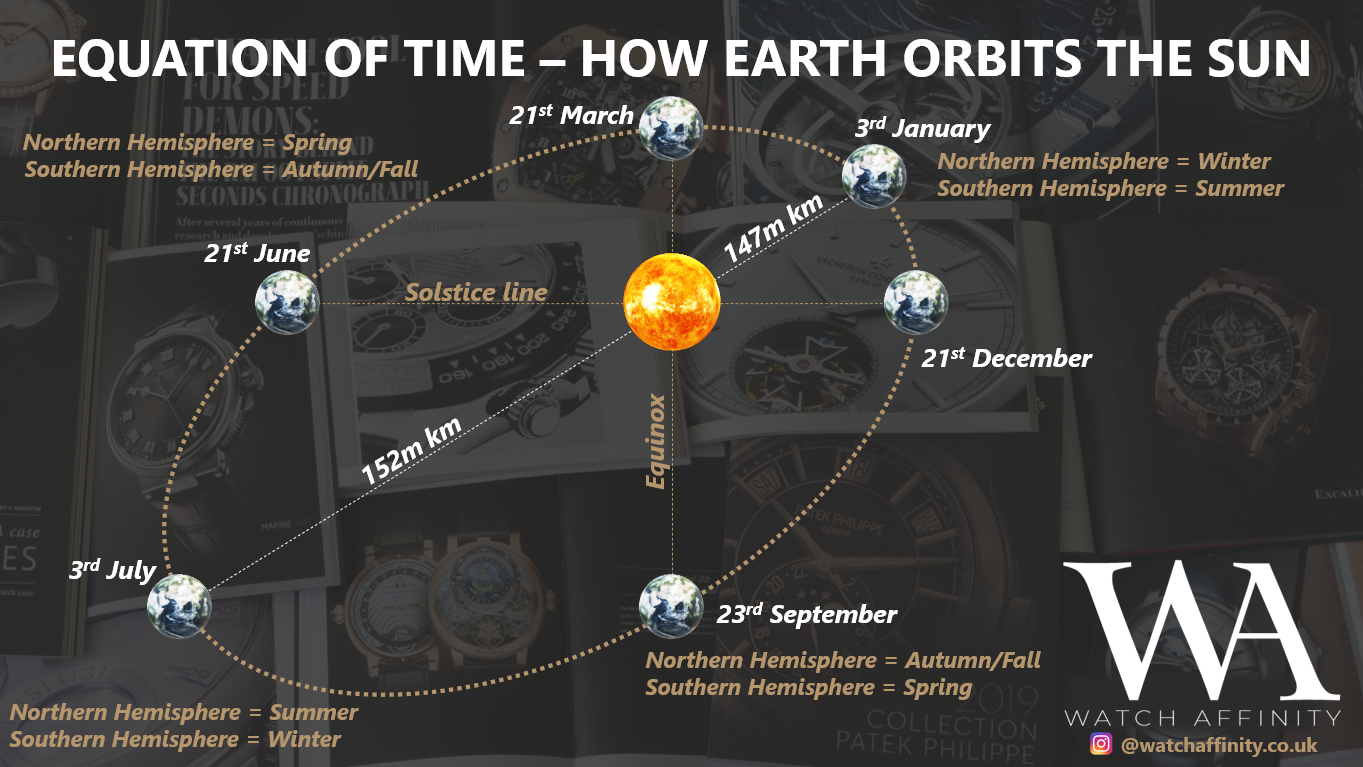
The elliptical orbit of the Earth causes a change in the Earth's speed
This marginal change in speed of the Earth on its orbit path is what causes the east-west variation in the analemma, and where we find the Equation of Time – it is the difference between what a clock would determine as midday (the “mean” time) and the “solar midday”.
Over the course of a year, solar time ranges from between 16 minutes and 23 seconds shorter to 14 minutes and 22 seconds longer than “mean” time as displayed on clocks.
Of course, the sun’s highest point in the sky will vary depending on where you are, with even just a small change in either longitude or latitude. This is fundamentally why we have a societally ‘agreed upon’ time which is shared across entire countries and time zones, with multiple time zones around the world in described in relation to meridian, known as Greenwich Mean Time (or GMT).
How is it displayed on a watch?
Despite the Equation of Time fulfilling a rather niche and very specific purpose, combined with the fact it is quintessentially moot in modern society, it is perhaps surprisingly not an uncommon complication to find in mechanical watchmaking, having been incorporated within some of the noteworthy pieces throughout history, including Patek Philippe’s Henry Graves Super Complication in 1932 and George Daniels’ Space Traveller 1, made in 1982.
That is not to say it is a relatively recent complication; it was also a part of Breguet’s famed ‘Grande Complication’ Pocket Watch, number 1160. This piece was commissioned for Marie-Antoinette in 1793 with the criteria of being constructed from gold wherever possible with as many complications as possible. There were no time of financial limits imposed, which was fortunate given the piece was not completed until 1827, 34 years after Marie-Antoinette had passed and even 4 years after Abraham-Louis Breguet himself passed, too, and it was completed by his son.
The piece included every known complication at the time it was made, and we can find the Equation of Time complication indicated by the blue hand fixed at the 10 o’clock position, pointing to a scale with numbers reading from +15 to -15.
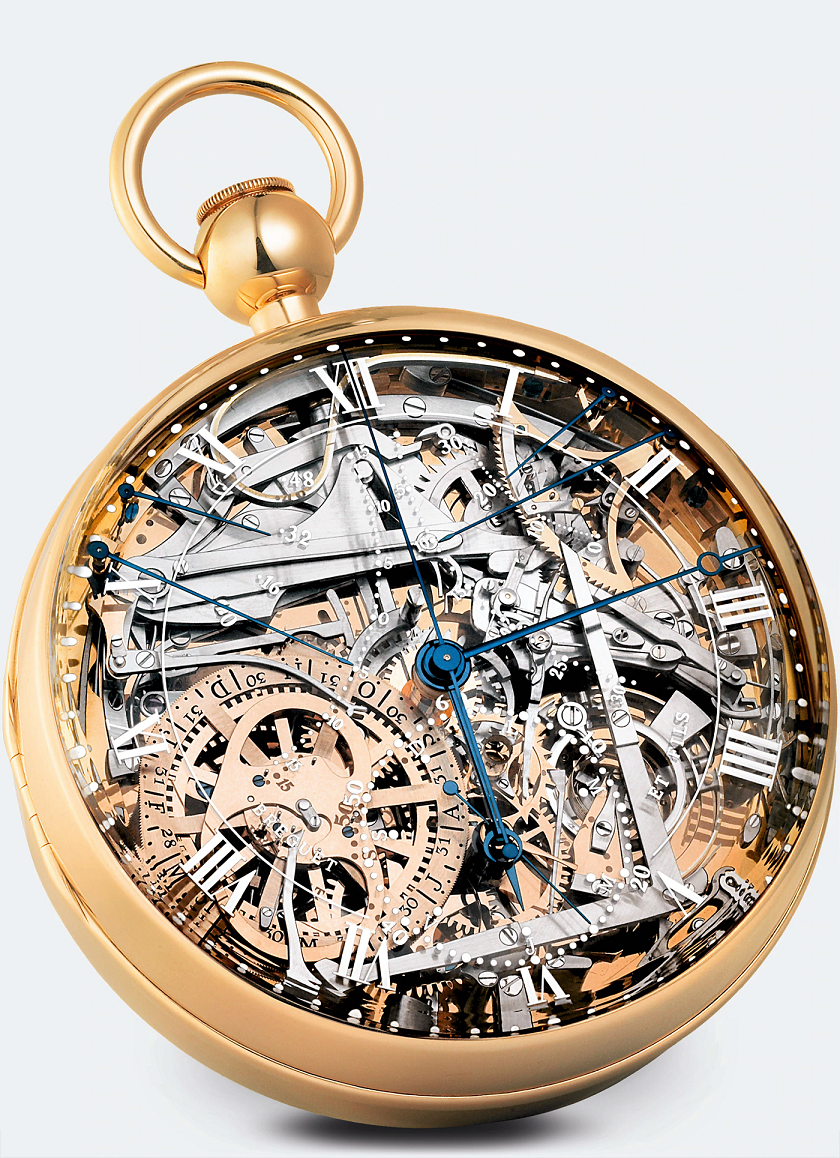
Breguet no 1160 ‘Marie Antoinette’, photo: Breguet
This same approach of using a scale from +15 to -15 is a common approach used, and can be found on contemporary implementations, such as the Audemars Piguet Royal Oak Perpetual Calendar Equation of Time 26603 references, Girard-Perregaux 1966 Equation of Time, and Panerai Luminor 1950 and Radiomir 1940 Equation of Time models. This type of indication is often driven by a specific cam, shaped like a kidney, designed to update the display as the variation between “mean” and “solar” time changes. Owing to the relative simplicity of the design of this display, it has not changed very much over time and a contemporary interpretation can be seen here on F.P. Journe’s Astonomic Blue piece unique for OnlyWatch 2019:

F.P. Journe Astronomic Blue for OnlyWatch 2019 – the Equation of Time indication is top left, reading "Retarde" and "Avance"
Another common method used to display the Equation of Time is to have an additional hand, co-axial to the minute hand, showing at a glance how far solar time is ahead or behind “mean” time. This is perhaps a slightly simpler implementation to read as it does not require the wearer to do any quick maths to interpret the “solar” time, although it is a more complicated mechanism owing to the additional gearing required to drive the additional hand on the same axis.
A good example of this implementation can be seen with Breguet’s Marine Equation Marchante 5887, which in addition to the solar time hand also incorporates a circular representation of an analemma within the tourbillon (if you want to see how this shape is derived, you check out the first minute or so of this video).
In the photos below, you can see that the time is between ten and quarter past two, with the “solar” time hand around 11 minutes further ahead:

Breguet Marine Equation Marchante 5887

The "solar" time hand can be seen with the Equation of Time analemma display in the tourbillon
So, what use does the Equation of Time have today? Well, nothing really. The concept of “mean” and “solar” time are so far detached from the ways in which we live our lives that it really doesn’t have any bearing at all. You might ask, in that case, why bother with it? You could indeed ask the same of mechanical watchmaking, given the invention of quartz, digital watches, and the fact that the time is displayed on pretty much all of the electronic devices we use today.
But of course, this is not the point. A mechanical watch is a product with a soul; an artisanal fusion of history, tradition, and engineering. At the beginning of this article, we made the point that no matter how complicated a timekeeping instrument may be, it shares with all other instruments a relationship to the passage of time, night and day, and a calendrical relationship with the celestial.
To this end, I would attest that the Equation of Time is a complication that is both a poetic and romantic embodiment of this relationship with the celestial, perhaps serving as just a little reminder of our place in the universe.
If you have any questions, please get in touch via our Contact page, or via our Instagram.
You might also be interested in:

